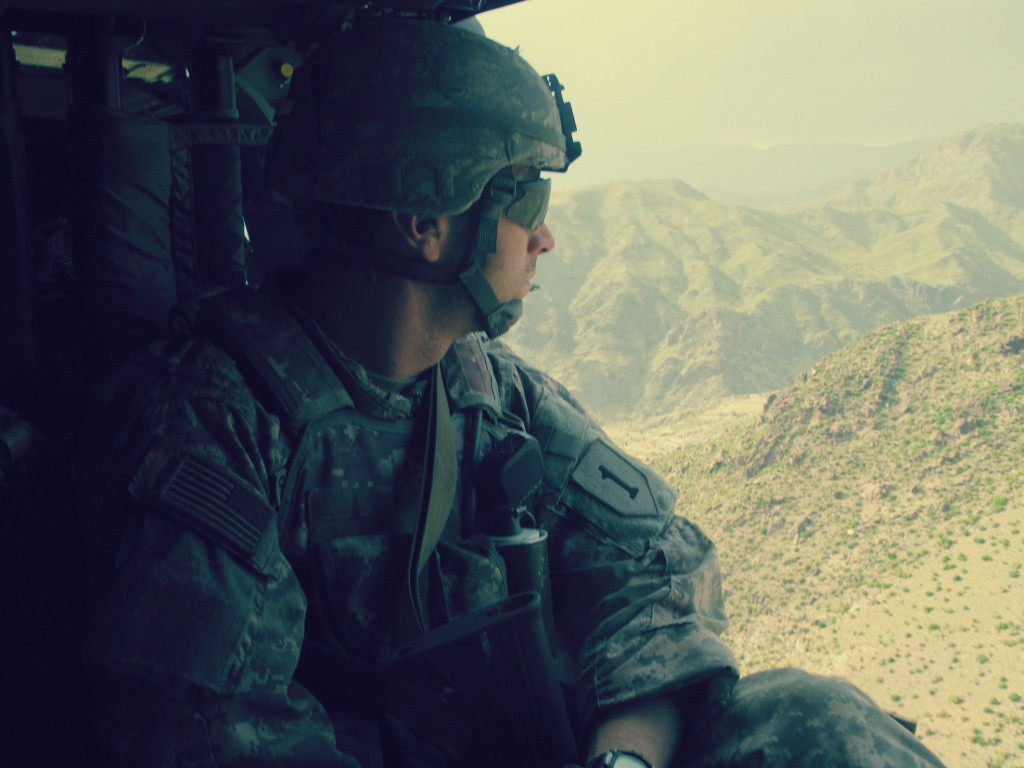Saving Captain Swenson

I was brought to tears Tuesday during the Medal of Honor ceremony in the White House celebrating the heroism of Captain William Swenson and his team in Afghanistan. He was the sixth soldier or Marine to receive the medal for heroism in Afghanistan. All six stories are remarkably similar in that none of these incredibly brave men should have been in a position to have earned the medal. Had soldiers in these engagements been adequately provided with a few cheap technologies perhaps they might have avoided the bloody traps that precipitated their heroic actions.
In his remarks, President Obama noted that the helmet cam video taken of Swenson carrying his wounded comrade to the medevac helicopter was the first to record a Medal of Honor recipient in action. But did you happen to notice in the video the bulky radio stuffed in Swenson’s backpack? This battle was fought in 2009 a time when rag pickers in Mumbai had cell phones. Why can’t our fighting men and women have cell phones in combat?
In his debrief after the action Captain Swenson railed justifiably about the failure of duty officers in the rear to approve the delivery of artillery and air support in the heat of battle. Imagine for a moment that Swenson, like the medevac crewman who took the video of Swenson, had a simple camera on his helmet capable of displaying the ground situation and linked it to screens in the Operations Center. Had the officers in the center seen the action in real time though Swenson’s eyes perhaps supporting fires might have been immediately cleared long before Swenson was trapped in the kill zone. You can buy helmet cams at Walmart.
According to unclassified reports of the battle, an aerial drone showed up over Swenson’s unit five hours after the ambush was sprung by the Taliban. What if our military had been able to deploy enough drones to put a set of aerial eyes over every ground patrol marching into a dangerous and uncertain situation? Surely had a drone been overhead the Taliban would never have dared to open fire.
Swenson’s team walked into a three sided ambush. All five members of Swenson’s lead element, four Marines and a medical corpsman, were killed in the opening exchange of fire. But what if the one of the lead element carried a sensor that detected movement or the metabolic presence of humans nearby? Such devices are easy to develop and the technology has been in use by civilian security companies for years. Again, had Swenson’s team been warned there would have been no ambush and no medal.
The Taliban engaged these Marines from behind the protection of large boulders and stone walls. Swenson was able to keep his attackers at bay only by throwing a hand grenade at them. In 2003, the Army developed the M25 “smart grenade launcher” that uses a laser beam to program a grenade to explode over the heads of the enemy hiding behind protective cover. Such a weapon in the hands of Swenson’s team would have taken out the Taliban with ease. After a decade of development the Army hopes to have the M25 in the hands of troops this year…maybe.
The greatest killer in the close fight is the simple mortar, nothing more complicated than a steel tube that launches an explosive grenade out to a distance of several kilometers. The Taliban used mortars to great effect against Swenson’s team. What if Swanson had had access to a really good “carry along” heavy mortar? What if the mortar bomb had precision GPS guidance such that the first round landed directly on the Taliban? With such a weapon Swenson’s fight would have lasted about three minutes instead of nine hours. Our current heavy mortar, capable of firing precision munitions, was designed by the Finns in 1931, copied by the Soviets in 1940, sold to Egypt in the fifties, captured by the Israelis in 1967 and then foisted on to the American Army in the eighties (You can’t make this up). We developed precision mortar shells for the heavy mortar about twenty years ago but until 2011, had never manufactured them due to the expense. Tell the families of these dead soldiers and marines about expense.
These and other soldier-saving technologies could have been developed and fielded cheaply and quickly years ago. Yet, after ten years of war the ground services, the Army and Marine Corps, remain starved for new, cutting edge life-saving materiel while the Department of Defense and their big defense company allies continue to spend generously on profitable big ticket programs like planes, ships, missiles and computers. Soldiers’ stuff is more Popular Mechanics than star wars. But Captain Swenson and his six Medal of Honor colleagues might have had a better day had the nation spent a bit more to give them a technological edge over the enemy.

